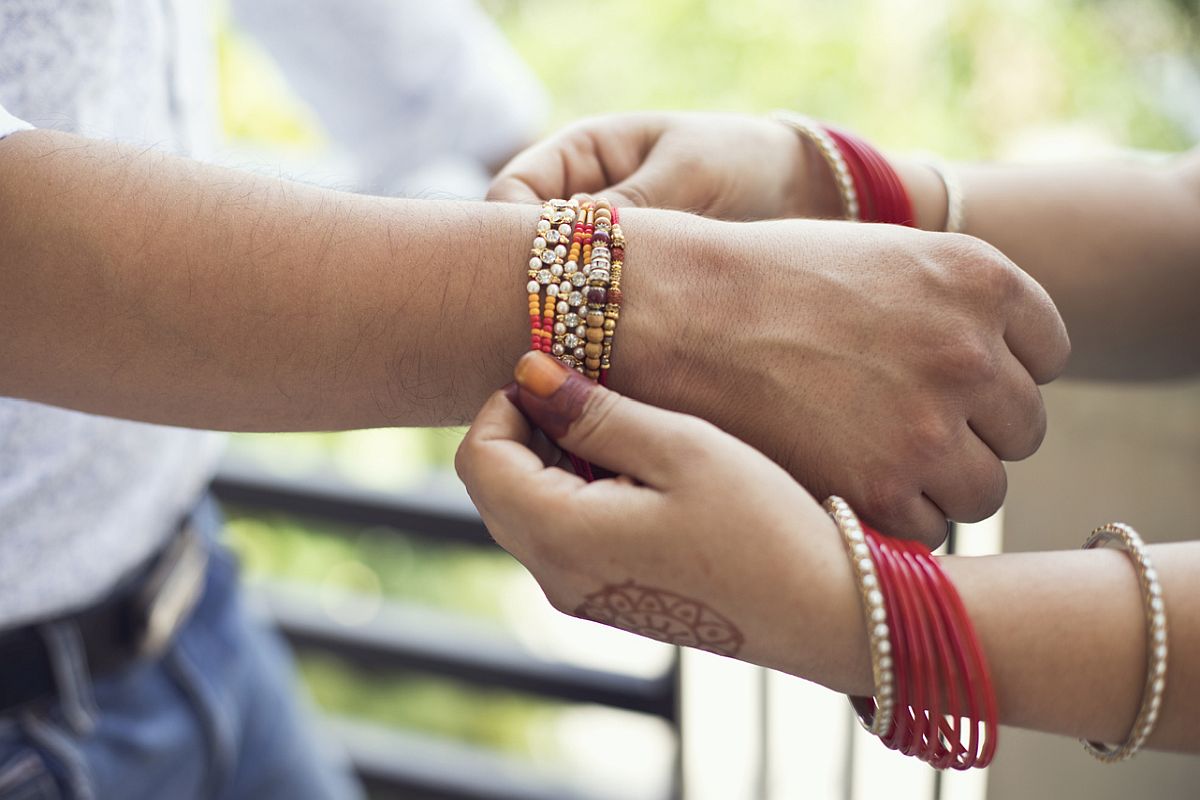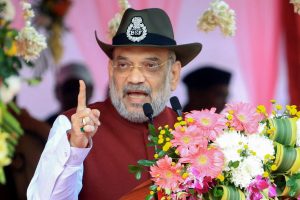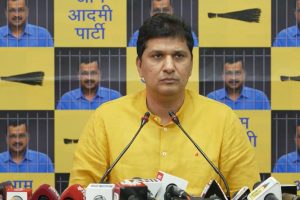The much-celebrated occasion of Raksha Bandhan is around the corner. This used to generate considerable excitement when we were young. We made rakhis with Anchor thread and brushed them with used toothbrushes until the thread fibres shone.
We then braided little beads onto the two side threads left long to tie them around our brothers’ wrists. Brothers busied themselves selecting the most thoughtful and appropriate gifts for their sisters. Rakhi highlights the strong and enduring bond between siblings. Sometime ago, someone asked me what the best gift was a brother could give a sister.
I felt the best gift was for the brother to truly understand his sister. I thought that one of the best ways in which this could be achieved was for the brother to step into his sister’s shoes for that day. To undertake the daily chores she does, visit the places she visits and so on.
Today, I feel the brother can go one step further and intervene to ensure that his cheerful, sprightly sister has a bright and safe future. He can oppose his sister’s child marriage with all his heart if he encounters it. If his affirmative action helps his sister to continue to enjoy her childhood, complete her education and be saved from the stress and physical danger of a teenage pregnancy, there can be no greater gift. Child marriage is a rampant social evil that has destroyed many young childhoods that should ideally have been spent in pursuit of knowledge and in gaining confidence.
Globally, in around 21 per cent of marriages, girls have been married off before the age of 18 – that is about 650 million girls. Out of these about 250 million were married even before the age of 15. One third of the child brides in the world reside in India. Though the scourge of child marriage affects both girls and boys, the proportion of boys is far lower. The median age of marriage of a girl in India is 16.8 years (much below the legal age of marriage for girls which is eighteen years), while that of boys is 22.6 years (which is higher than their legal age of marriage, twenty one years).
Though cognisant of the complex social pressures including poverty, lack of physical safety and many others that compel people especially in rural areas to marry off their daughters early, I feel the human price of doing this is paradoxically far steeper. The deaths due to teenage pregnancy are two times higher in girls aged less than 18 years and three times higher in under 15- year-old mothers. Though our country is showing a slight dip in maternal mortality in the last decade from 130 per 100000 in 2014 to 122 in 2017, this figure is still unacceptably high. Pregnancy-related complications are the cause of the greatest number of deaths of girls in the age group 15-19 years. Poignantly, that is the very age when young children are deciding their futures and what they dream of achieving in life.
To have your childhood abruptly cut short because of a forced marriage and then to have your life cut short because of pregnancy complications seems a tragic waste of potential. Apart from outright mortality, many girls are left with permanent damage to their pelvic areas or urinary systems from the ravages of pregnancy on such a young body. This makes them have permanently morbid conditions for the long term and contributes to a lack of self -confidence. Not only is the mother’s health at risk, but the babies born to teenage mothers are more likely to be preterm, of low birth weight, or stillborn. They also have a higher morbidity and mortality rate. It is estimated that 15 to 18 per cent of children born worldwide have low birth weight (less than 2.5 kg) representing more than 20 million births a year.
India has the highest number of pre-term babies in the world – about 25 per cent of the overall share. Over 25 million babies are born annually in India and about 1.7 million have low birth weight – below 2.5 kg – and 0.4 million have very low birth weight – below 1.5 kg. Several articles in peer-reviewed journals provide data establishing that the young age of mothers – less than 20 years and low birth weight of mothers – BMI < 18.5 per cent were both risk factors (National Family Health Surveys of India) for low birth weight babies. Low birth weight and prematurity are associated with higher rates of stunted growth, chronic illnesses like obesity, diabetes and cardiovascular diseases in later life and neurological problems relating to cognition and neurodegeneration.
Such children are also at risk of retinopathy of prematurity (ROP), a potentially blinding condition. Prematurity is a leading contributor to neonatal mortality. India’s own infant mortality rate is 32/1000 live births (2018). Low birth weight babies are 40 times more likely to die in the first month of life. Thus, we can see that babies born to teenage mothers start life with a huge disadvantage. There are other social implications. Reports such as the 2006 one by International Centre for Research on Women highlighted that girls married under the age of 18 were twice as likely to be physically assaulted by their spouses and to feel that this was justified. The study of psychology tells us that children tend to internalize the blame for events around them. If a child bride who is mentally immature decides to take upon herself the blame for being beaten by her spouse or the ill health or low IQ of her child, you can imagine the mental stresses she would be living with for a lifetime.
She and her spouse would also not be in a strong position to bring up their children well, if they are young and inexperienced about life. The UN World Health Assembly goal is to achieve a 30 per cent reduction in the number of infants born with a weight lower than 2500 g by the year 2025. Reducing the number of child marriages will be a powerful way to achieve this goal. It will also pave the way for gender equality. In 2017, a small group of social activists including myself had worked on a PIL on equal age of marriage for girls and boys (which currently stands at a differential of 18 years for the girl and 21 years for the boy respectively), since the Constitution recognizes all citizens as equal. The exact age would be the decision of medical experts and child rights activists who understand the deeper nuances. But having an equal age (whatever it may be) would shift the mindset away from child brides for older men. Though ultimately our PIL did not come up for discussion for reasons outside our control; a ray of hope is that recently the Union government has constituted a task force to examine the issue of child marriage. It could either support the NGOs dedicatedly working in the field of child marriage for several years or else, working jointly with them, come up with an effective solution to curb child marriage. This would address a multitude of issues in one stroke – overpopulation, illiteracy, gender related disadvantages such as domestic violence and wage gap.
So, awaken brothers! If you can picture your smiling and carefree sister, whom you played with lovingly as a child, turning into a mental and physical wreck because of a forced early marriage, it should bother you greatly. This Raksha Bandhan, give your sister a gift born out of deep courage and love. Do all in your power to prevent her from getting married before the legal age of 18. Gift her your unconditional support to realize her full potential.
(The writer is a Delhi-based medical practitioner)











